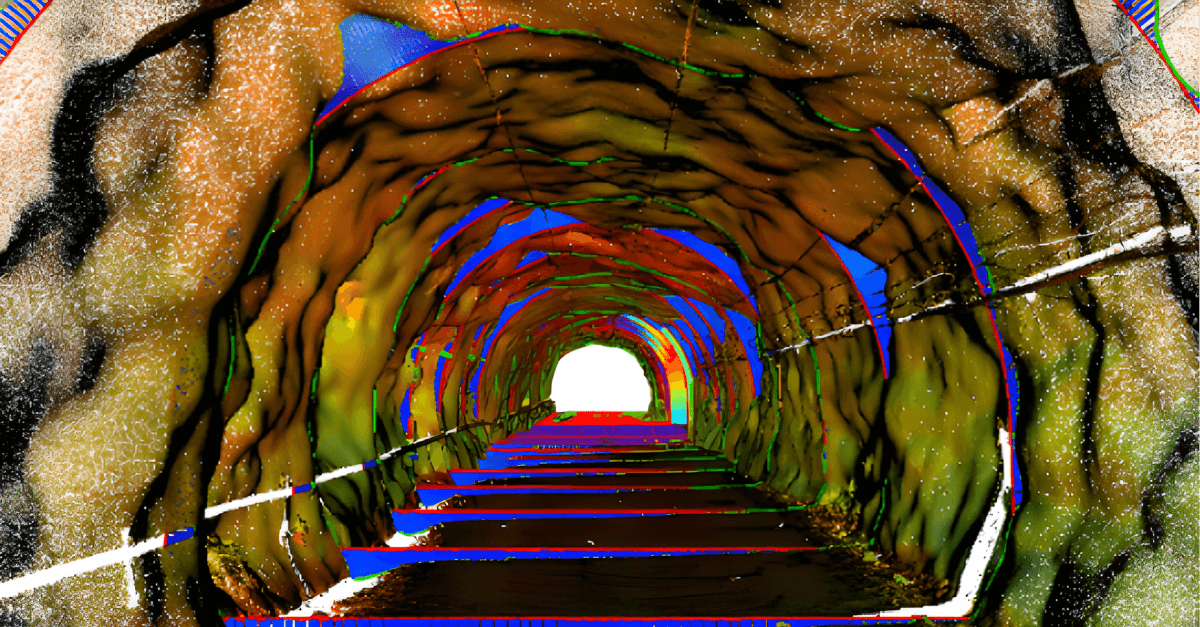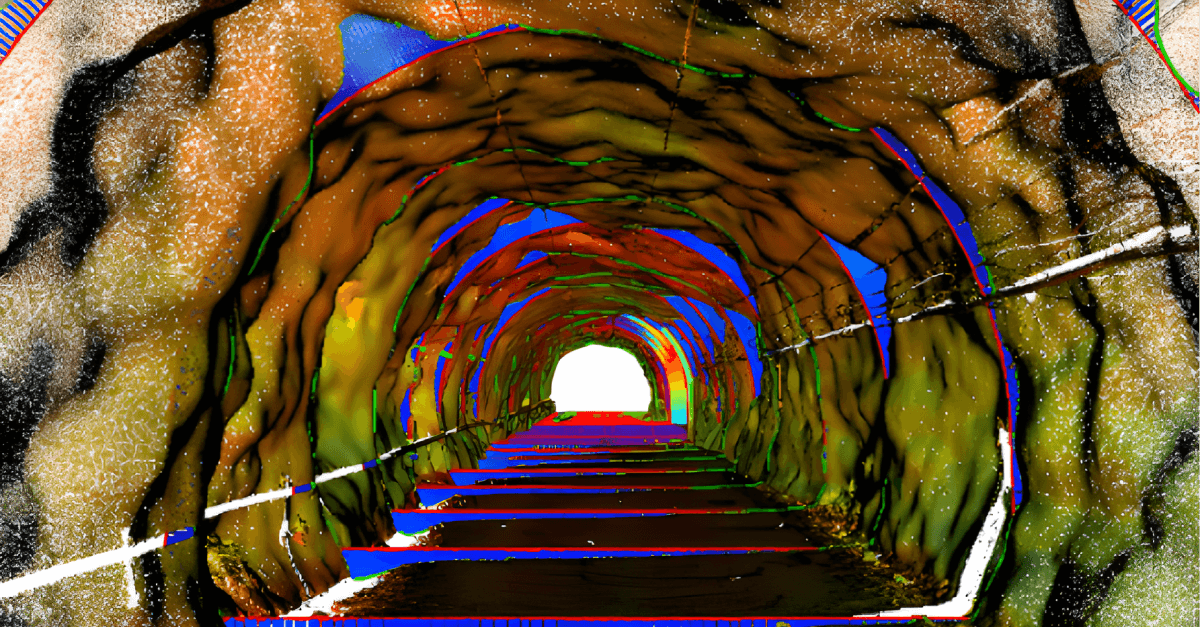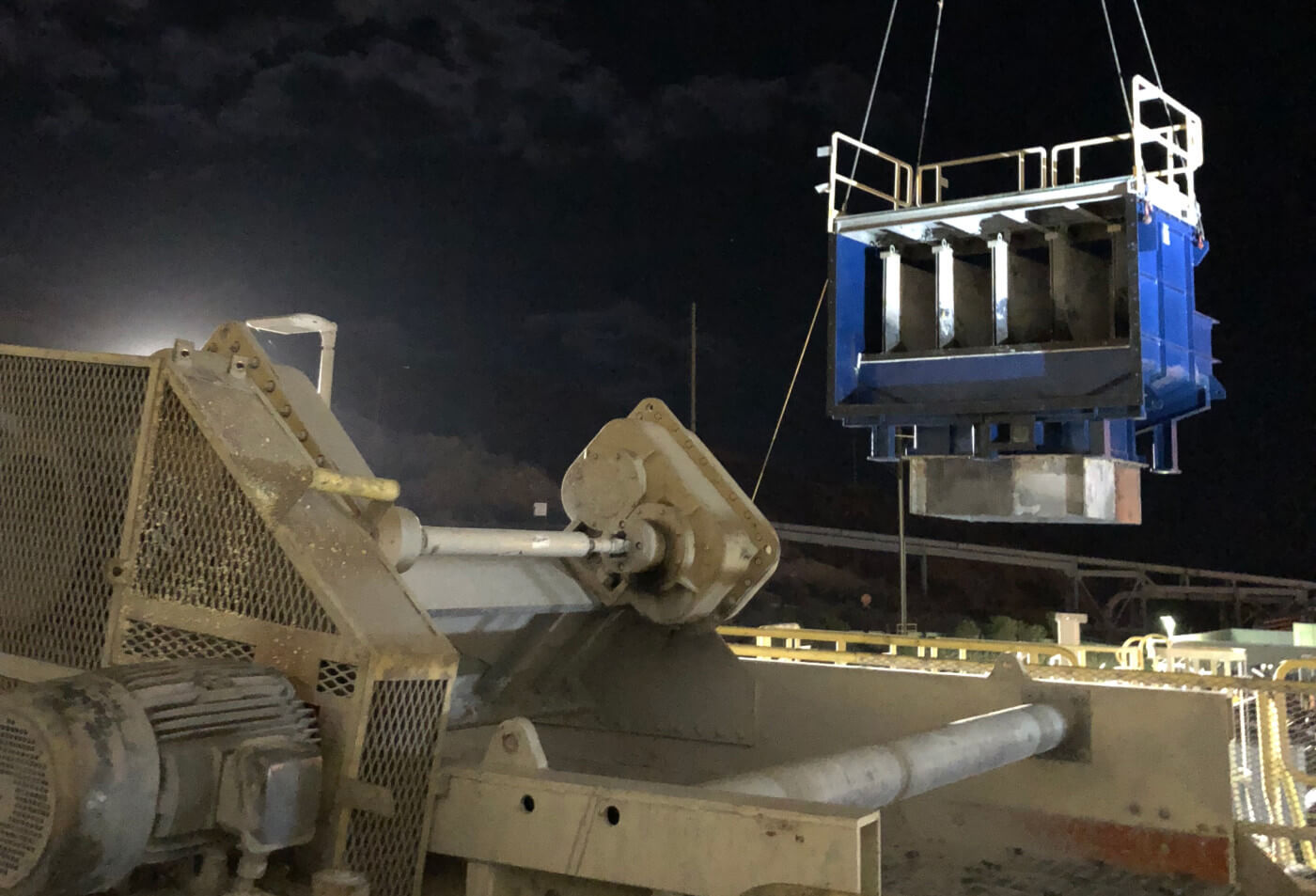
Miners contend with dangerous environments, extreme locations and fluctuating demand. Efficiency and safety are their top two priorities, and companies remain eager to find new ways of achieving these goals more easily. Technological developments have proven critical in accomplishing these aims.
One such technology is 3D scanning. It’s redefining how mining companies acquire data about tunnels, shafts, stockpiles, mills and more.
Scanning offers many advantages to miners, but it all boils down to speed and accuracy. As a measurement tool, 3D scanning is far more efficient than traditional surveying methods, delivering more data in less time, meaning less operational disruption.
Here’s how it works at a high level. 3D scanners capture point clouds from large components, systems and entire mining environments using non-contact methods, allowing mining companies to capture data from risky or difficult-to-access locations without putting a human operator in harm’s way.

3D scan of an underground tunnel
The role of 3D scanning software in to facilitate data processing whatever the ultimate application may be – wear analysis, volumetric load scanning, spatial visualization or reverse engineering parts.
It's worth exploring the advantages in more detail to get a clear understanding of the results you'll get when you introduce scanning into your mining operation. Let’s dive in!
1. Efficiency
With 3D scanning, mining companies can acquire accurate information about virtually every part of the physical operation faster. Without a great deal of special expertise, the mining company can map tunnel profiles, stockpile volumes, pits and caves in minutes – up to 10 times faster than before.
In addition, the digital data set can be accessed and analyzed later without the need to go back into the mine, which means fewer interruptions and less overall downtime. For example, one of the most time-consuming aspects of surveying is sectioning, the process of providing a ‘slice’ of a tunnel at a specific position. It involves setting up a total station instrument within the space and rotating it to capture the required measurements, which can take time. More importantly, it requires that section of the mine to be shut down.
By comparison, 3D scanning can acquire the same data in minutes and individual sections can be extracted later from the scan data. Surveyors can produce thousands of sections from a set of 3D scan data in the same time it would have taken to produce just a few sections manually.
2. Accuracy
3D scanners capture millions of data points about mine locations and mining equipment, creating a highly precise 3D model of the environment or devices rather than a series of discrete points. These 3D data sets also improve accuracy in terms of the actual state of the mine, its structures, systems and equipment as opposed to the original models or plans.
Accurate 3D scans can be used as a reference for future surveys of the mine to highlight important changes that occur over time. Similarly, an accurate 3D model of the tunnel or shaft will help mining companies when upgrades or modifications need to be made due to slight deviations from the design model.

Every mine is different and 3D scanning enables engineers to easily design a custom solution for each.
3. Flexibility
Unlike traditional manual surveying methods, 3D scanning technologies provide a much more flexible range of applications in mining. Scanners can be used by the mining team or attached to a drone, trolley, or even a robot to access virtually any space, regardless of its risks. 3D scanning also works in underground environments where GPS is not an option.
4. Continuity
A big advantage of 3D scan data is that it can be accessed by many different off-site teams to gain valuable insights about operations quickly.
When stored in the cloud and made available through collaborative platforms, this data can help rock engineering teams identify rock deformation and areas that may become unstable. Geology teams can examine the structure of specific areas before applying shotcrete to ensure the correct thickness is applied. Ventilation teams can use computational fluid dynamics (CFD) to analyze airflow and understand how proposed changes may affect it.
5. Safety
One of the most important ways that 3D scanning is transforming mining operations is its impact on worker safety. Its speed helps minimize the amount of time workers spend in areas with more risks or more dangerous conditions.
The amount of data captured reduces the need for repeat visits. It also eliminates the need to put an operator in harm’s way for the riskiest surveying assignments, which can potentially be done by drone, robot or some other vehicle with the operator safely above ground.
3D scans of mining areas and equipment also make it much easier for mining companies to recognize problem areas, instabilities and other risks and take appropriate action.
The ability to design custom solutions that perfectly fit inside a mine is one of the main reasons that Titan Engineered Solutions implemented 3D scanning in its operation. This Arizona, US-based mining solutions provider scans the entire area where a platform needs to fit and checks for interferences before shipping to the client’s site, which makes it possible to deliver a bespoke, first-time-right design every time.

Titan Engineered Solutions uses 3D scanning to deliver first-time-right custom mining solutions
The future of 3D scanning in mining
The goals of new mining technology are often the same: improve the efficiency of the operation and the safety of the workers involved. 3D scanning provides multiple ways to accomplish both of these goals. The future should continue along this path as 3D scanning systems gain the ability to capture even more data in less time.
Today, 3D scanning can provide real-time insights into the efficiency of mining processes and the structural integrity of a mine. With the help of 3D scanning software, such as the Geomagic Design X, Control X or Wrap, mining companies can expect to gain an even more accurate picture of operations.
More and more mining companies are embracing 3D scanning. Discover what are the most valuable 3D scanning applications in mining in our white paper, The Light at the End of the Tunnel.


